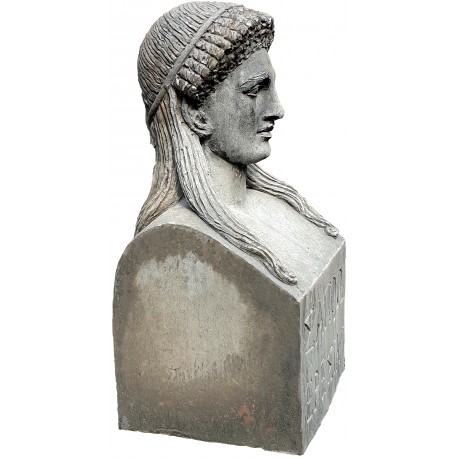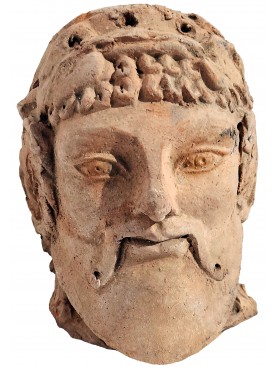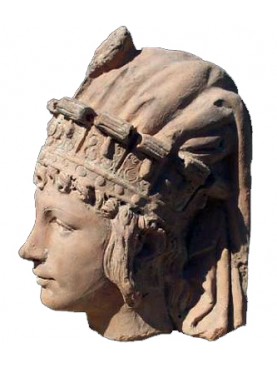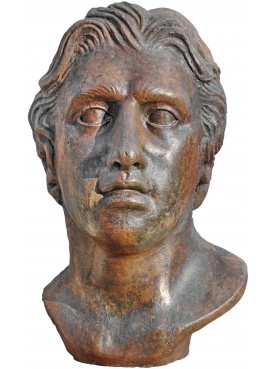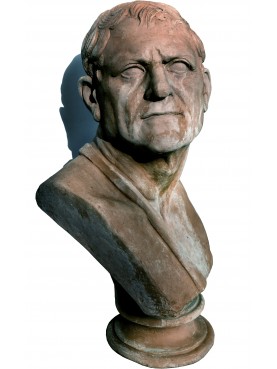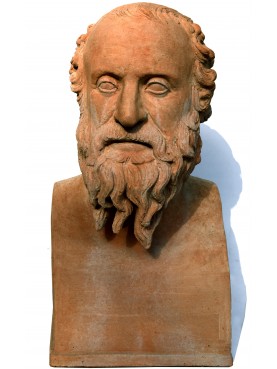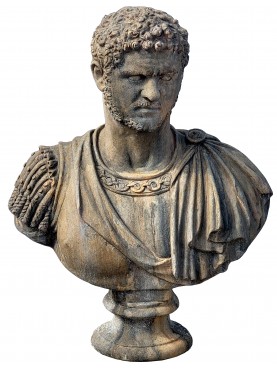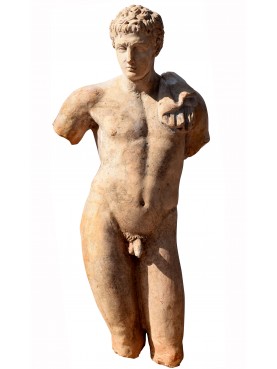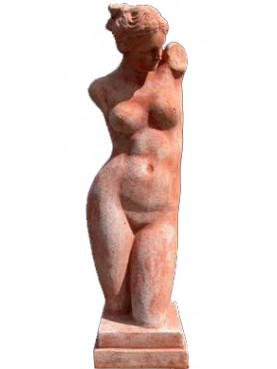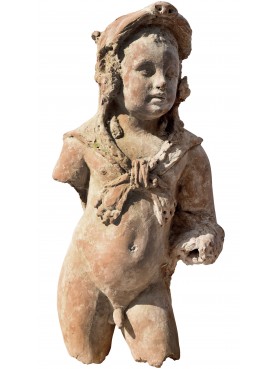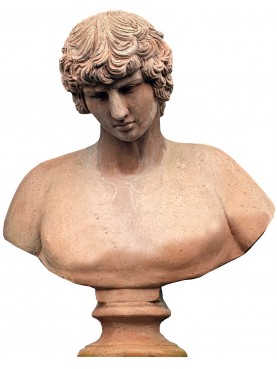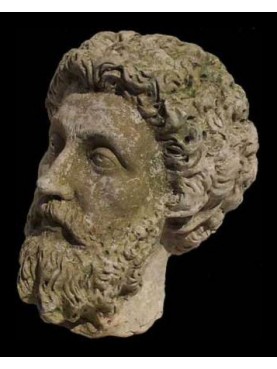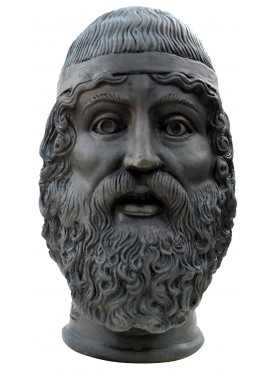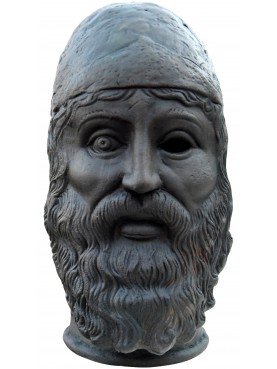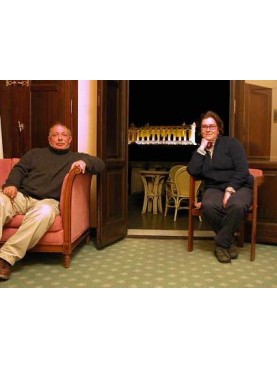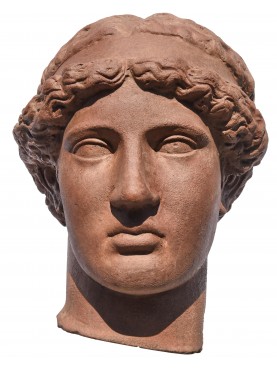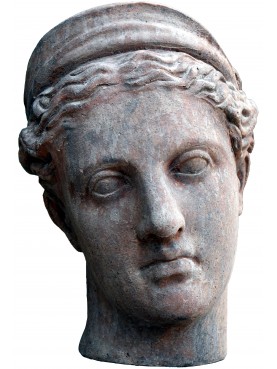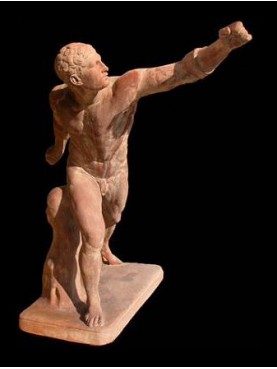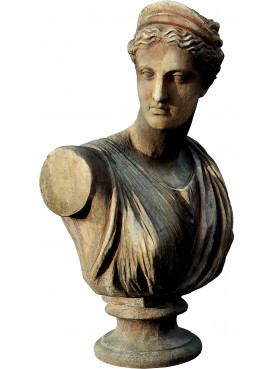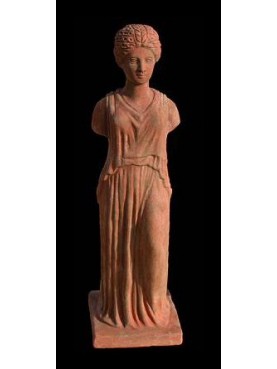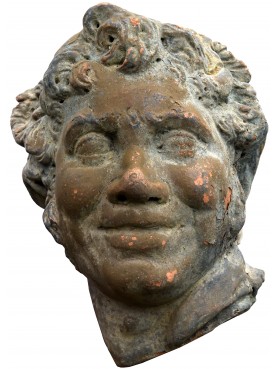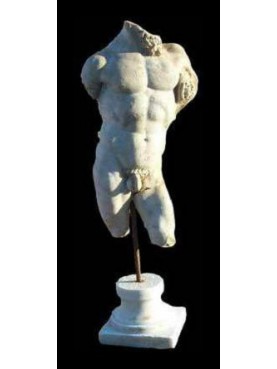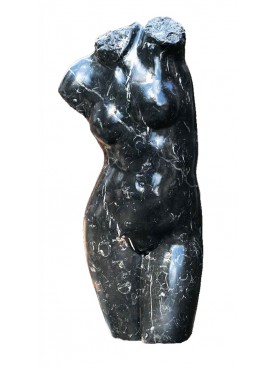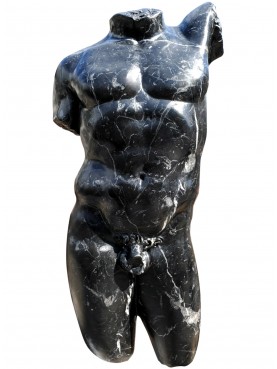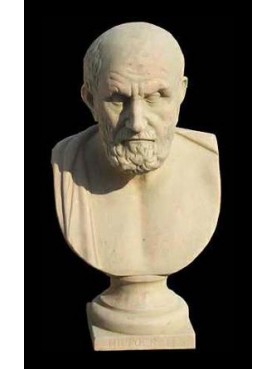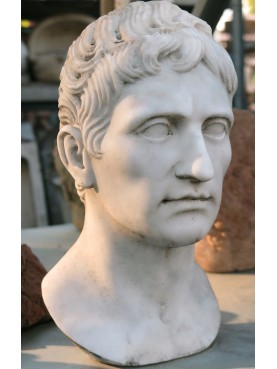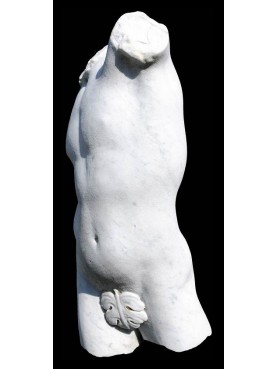Terracotta Herm of Sappho Capitoline Museums of Rome
Terracotta Herm of Sappho Capitoline Museums of Rome
14134
New
2 Available
Data sheet
| Height | 26.38 in | 67 cm |
| Width | 13.78 in | 35 cm |
| Depth | 12.99 in | 33 cm |
| Weight | 74.96 lbs | 34 Kg |
| Ancient manufacturing source | Roman copy | |
| Rectangular base | 13.78 in X 12.20 in | 35 X 31 cm |
| Manufacturing | Recuperando srl | |
| Material | Terracotta | |
| Museum where the Original is exhibited | Musei Capitolini Roma |
More info
Sappho (c. 630 – c. 570 BCE) was an Archaic Greek poet from the island of Lesbos.[a] Sappho is known for her lyric poetry, written to be sung while accompanied by a lyre. In ancient times, Sappho was widely regarded as one of the greatest lyric poets and was given names such as the "Tenth Muse" and "The Poetess". Most of Sappho's poetry is now lost, and what is extant has mostly survived in fragmentary form; two notable exceptions are the "Ode to Aphrodite" and the Tithonus poem. As well as lyric poetry, ancient commentators claimed that Sappho wrote elegiac and iambic poetry. Three epigrams attributed to Sappho are extant, but these are actually Hellenistic imitations of Sappho's style.
Little is known of Sappho's life. She was from a wealthy family from Lesbos, though her parents' names are uncertain. Ancient sources say that she had three brothers; Charaxos (Χάραξος), Larichos (Λάριχος) and Eurygios (Εὐρύγιος). The Suda mentions the names of all three brothers. Two of them, Charaxos and Larichos, are also mentioned in the Brothers Poem discovered in 2014. She was exiled to Sicily around 600 BCE, and may have continued to work until around 570 BCE. Later legends surrounding Sappho's love for the ferryman Phaon and her death are unreliable.
Sappho was a prolific poet, probably composing around 10,000 lines. Her poetry was well-known and greatly admired through much of antiquity, and she was among the canon of Nine Lyric Poets most highly esteemed by scholars of Hellenistic Alexandria. Sappho's poetry is still considered extraordinary and her works continue to influence other writers. Beyond her poetry, she is well known as a symbol of love and desire between women, with the English words sapphic and lesbian being derived from her own name and the name of her home island respectively. Whilst her importance as a poet is confirmed from the earliest times, all interpretations of her work have been coloured and influenced by discussions of her sexuality.

